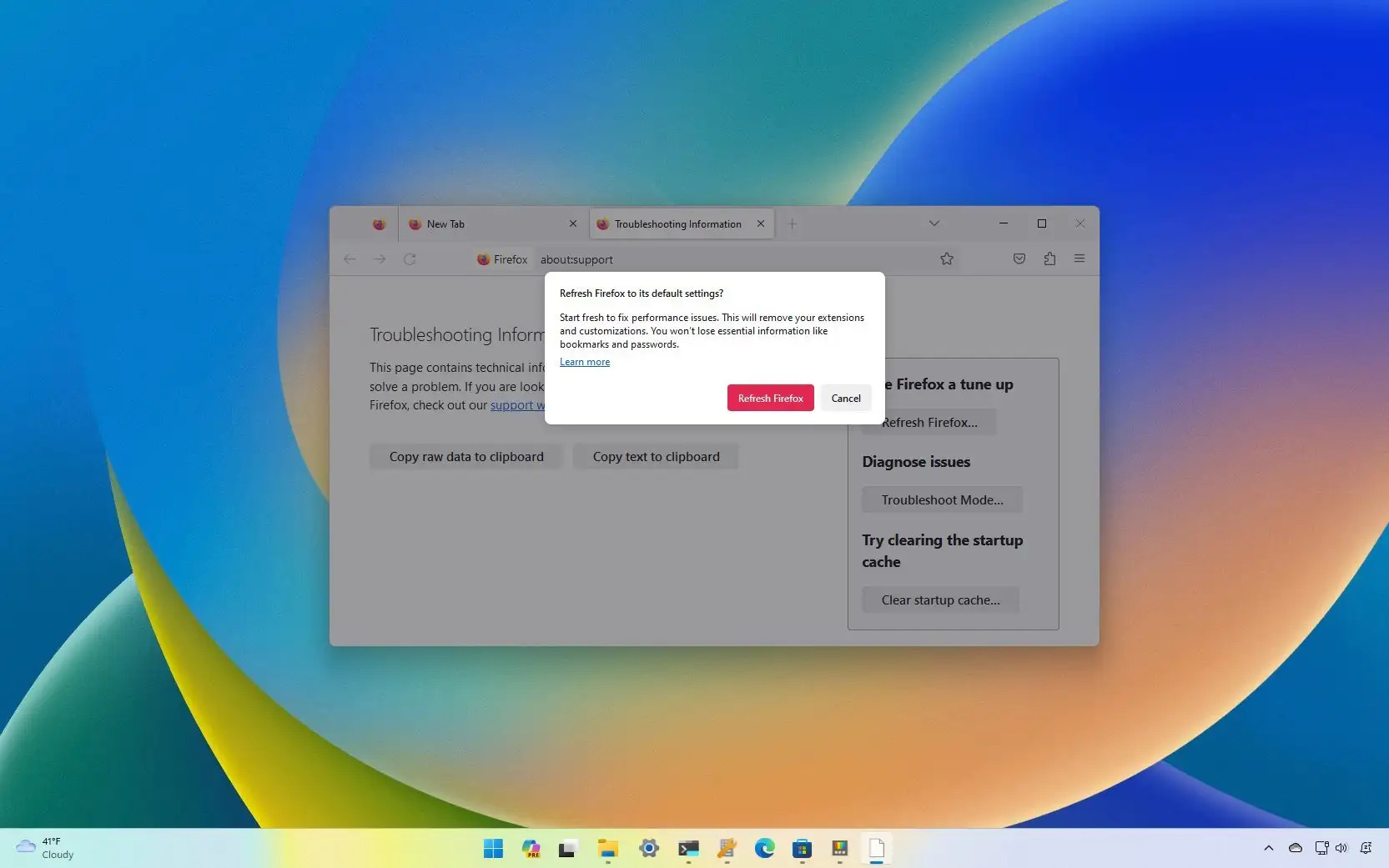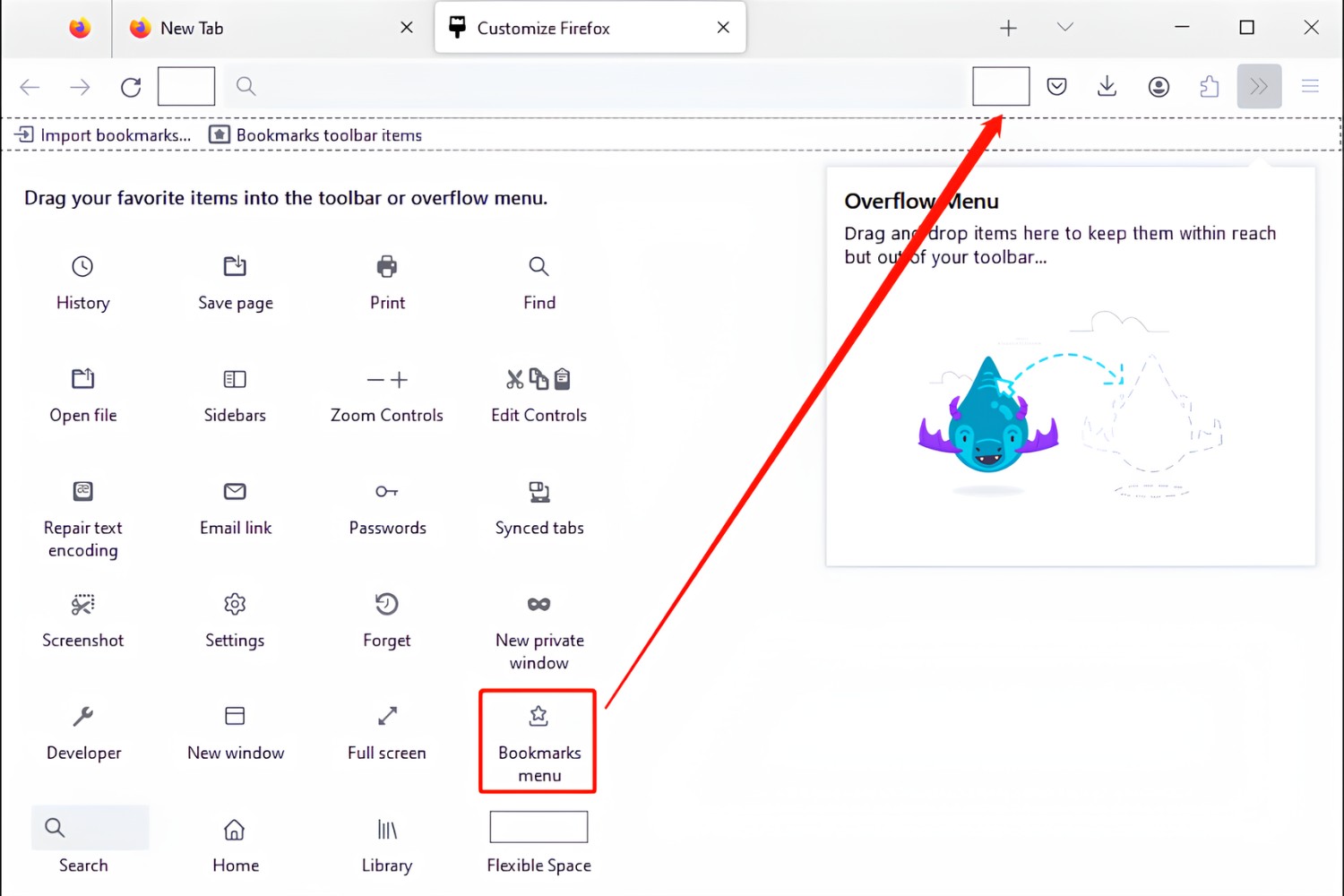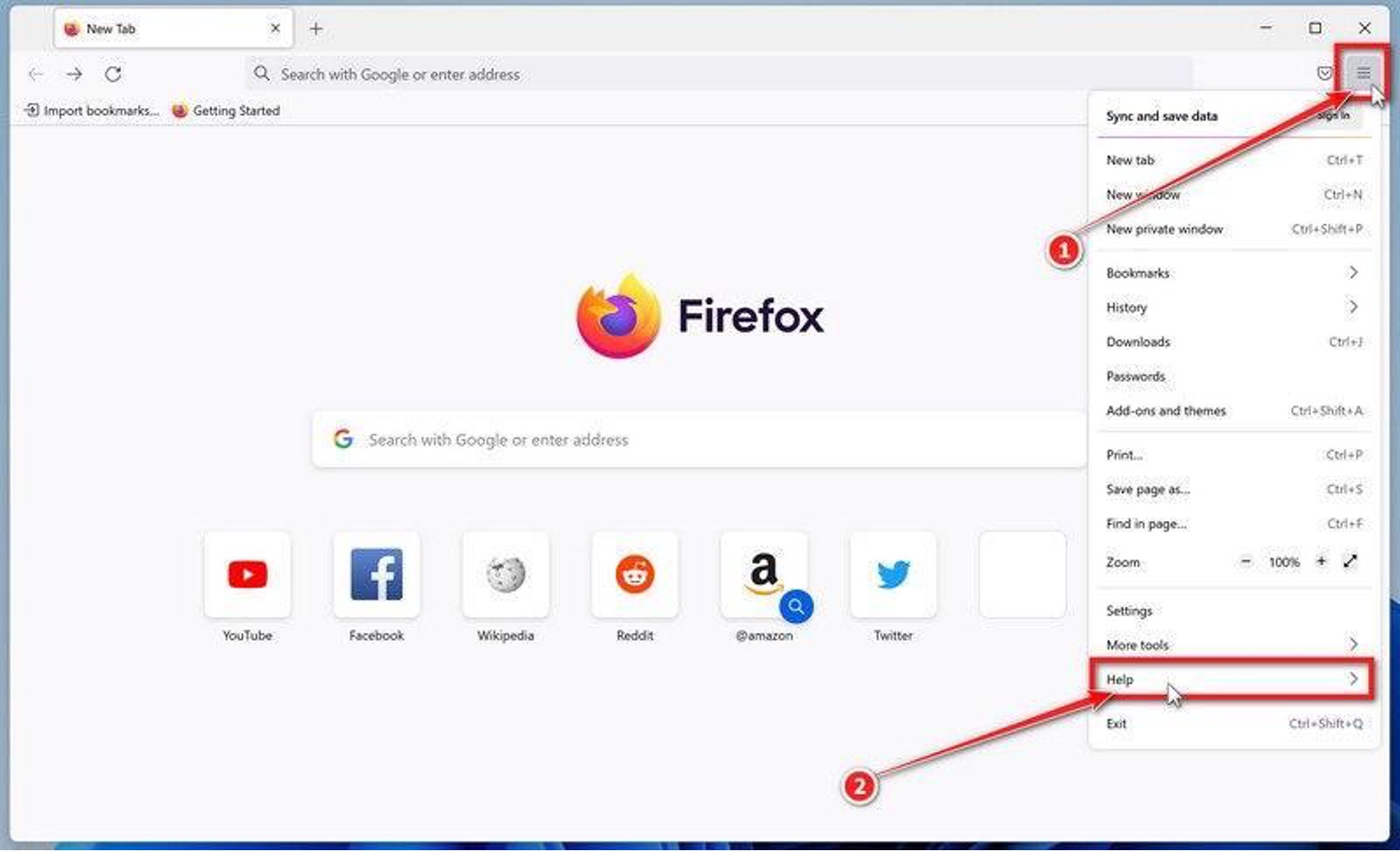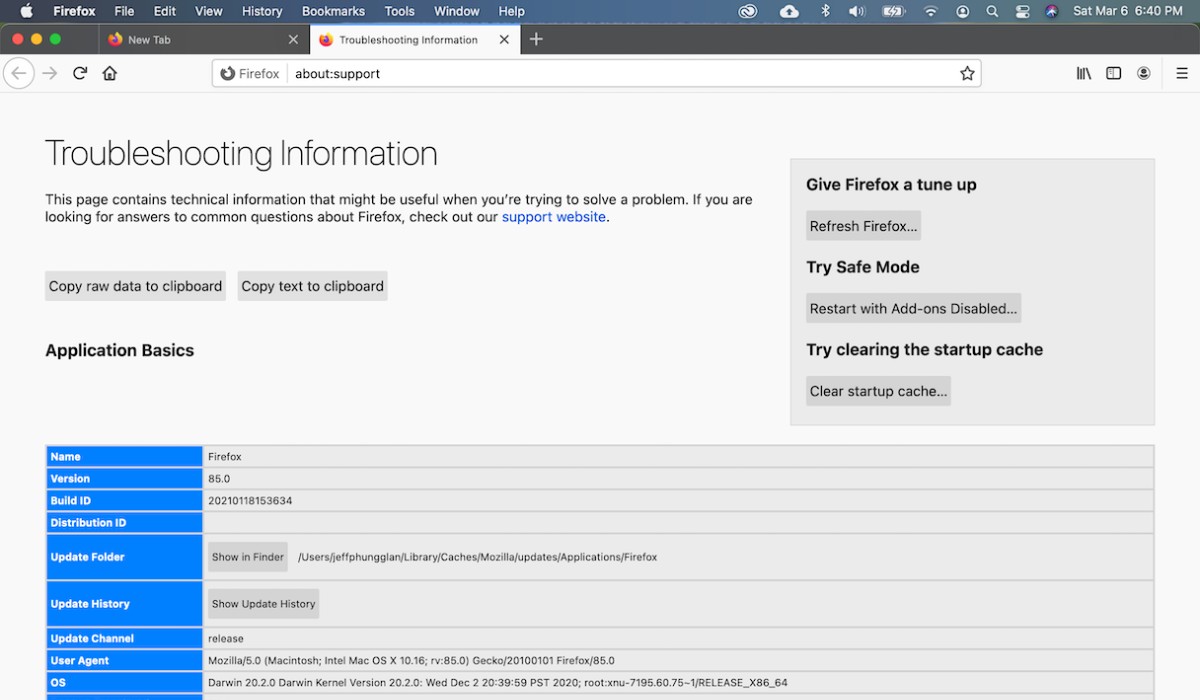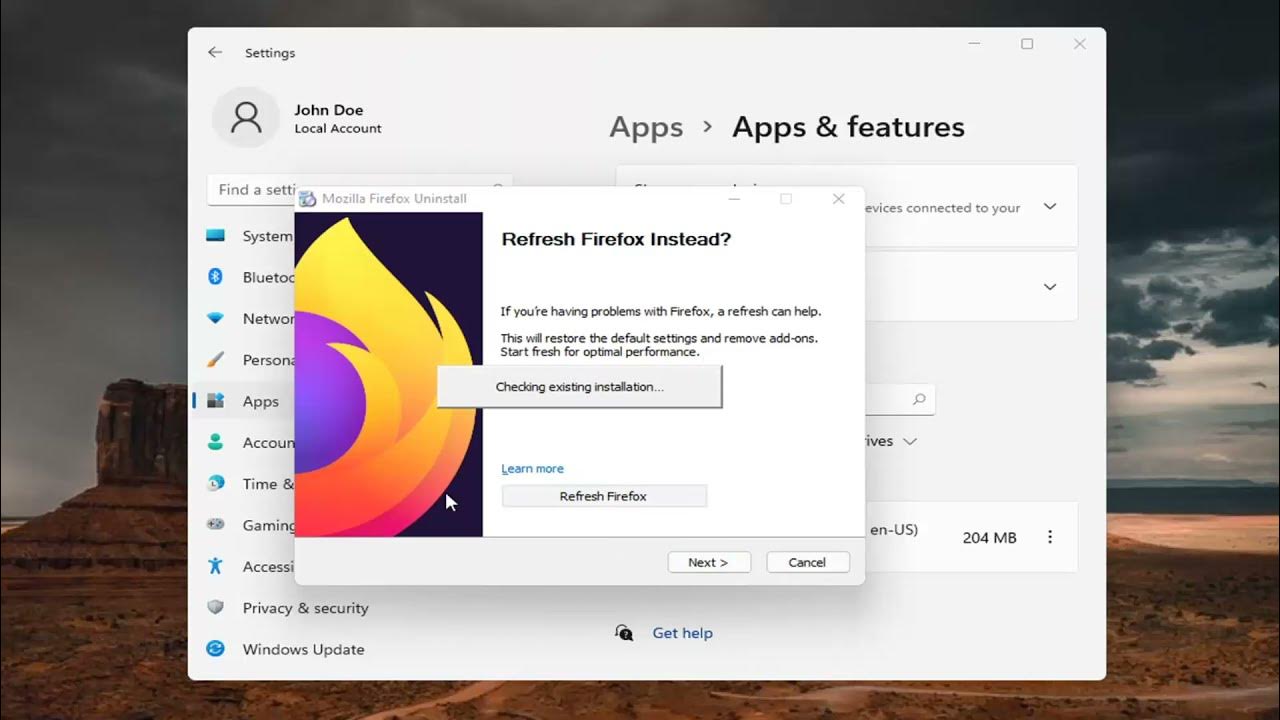Introduction
Restoring old Firefox data after a reset can be a lifesaver for anyone who has accidentally lost their bookmarks, browsing history, or saved passwords. Whether it's due to a browser malfunction, a mistaken action, or a computer crash, the frustration of losing valuable browsing data can be overwhelming. Fortunately, Firefox provides a way to recover this data, offering a glimmer of hope to those who thought their browsing history was lost forever.
In this article, we will explore the step-by-step process of restoring old Firefox data after a reset. By following these instructions, you can regain access to your cherished bookmarks, revisit your browsing history, and seamlessly retrieve your saved passwords. This guide aims to empower users with the knowledge and confidence to navigate through the restoration process, ensuring that they can reclaim their browsing data without unnecessary stress or confusion.
So, if you've recently reset your Firefox browser and are now seeking a way to retrieve your old data, you're in the right place. By the end of this article, you'll be equipped with the necessary insights to effortlessly restore your browsing history, bookmarks, and saved passwords, allowing you to pick up right where you left off before the reset. Let's dive into the step-by-step process of locating and restoring your old Firefox data, so you can bid farewell to the anxiety of lost browsing information and welcome back the convenience of seamless web browsing.
Step 1: Locate the Old Firefox Data
When it comes to restoring old Firefox data after a reset, the first crucial step is to locate the specific files that contain your browsing history, bookmarks, and saved passwords. Firefox stores this data in a dedicated profile folder on your computer, and by accessing this folder, you can initiate the process of restoring your valuable browsing information.
To begin, you'll need to navigate to the Firefox profile folder on your computer. This folder houses all the essential data related to your browsing activities, including bookmarks, browsing history, and saved passwords. The location of the profile folder varies depending on your operating system:
For Windows Users:
- Open the File Explorer and navigate to the following path:
C:\Users\YourUserName\AppData\Roaming\Mozilla\Firefox\Profiles\. - Within the "Profiles" folder, you will find a subfolder with a unique alphanumeric name, which represents your Firefox profile. This folder contains all the essential data related to your browsing activities.
For macOS Users:
- Open the Finder and access the following path:
/Users/YourUserName/Library/Application Support/Firefox/Profiles/. - Similar to the Windows setup, you will find a subfolder with a unique alphanumeric name within the "Profiles" directory. This folder holds the key to your browsing data.
For Linux Users:
- Open your file manager and navigate to:
/home/YourUserName/.mozilla/firefox/. - Within this directory, you will find the profile folder, denoted by a unique alphanumeric name, which stores your browsing history, bookmarks, and saved passwords.
Once you've located the profile folder, you're one step closer to restoring your old Firefox data. This folder contains essential files such as places.sqlite for bookmarks and logins.json for saved passwords. These files are integral to the restoration process, as they hold the key to your lost browsing information.
By successfully locating the Firefox profile folder and identifying the crucial files within it, you have laid the groundwork for the subsequent steps in the restoration process. With this vital information at your fingertips, you are now ready to proceed to the next phase of restoring your old Firefox data.
In the next section, we will delve into the process of restoring the old Firefox data, leveraging the insights gained from locating the profile folder and identifying the essential files within it.
Step 2: Restore the Old Firefox Data
Now that you've successfully located the Firefox profile folder and identified the essential files containing your browsing data, it's time to initiate the restoration process. Restoring old Firefox data after a reset involves replacing the current profile data with the contents of the old profile, effectively reverting your browser to a previous state and reclaiming your lost bookmarks, browsing history, and saved passwords.
Before proceeding with the restoration, it's crucial to ensure that Firefox is not running. Close the browser and any associated processes to prevent conflicts during the data restoration process. Once Firefox is closed, you can begin the restoration process by following these steps:
For Windows Users:
- Navigate to the location of the old Firefox profile folder that you previously identified in Step 1.
- Copy the entire contents of the old profile folder, including all files and subfolders.
- Now, navigate to the current Firefox profile folder, which is typically located at
C:\Users\YourUserName\AppData\Roaming\Mozilla\Firefox\Profiles\. - Paste the contents of the old profile folder into the current profile folder, replacing any existing files with the ones from the old profile.
For macOS Users:
- Access the location of the old Firefox profile folder that you identified in Step 1.
- Copy all the files and subfolders from the old profile folder.
- Proceed to the current Firefox profile folder, typically found at
/Users/YourUserName/Library/Application Support/Firefox/Profiles/. - Paste the contents of the old profile folder into the current profile folder, overwriting any existing files with those from the old profile.
For Linux Users:
- Open the file manager and navigate to the location of the old Firefox profile folder identified in Step 1.
- Copy all the files and subfolders from the old profile folder.
- Locate the current Firefox profile folder, usually situated at
/home/YourUserName/.mozilla/firefox/. - Paste the contents of the old profile folder into the current profile folder, replacing any existing files with those from the old profile.
By following these steps, you are effectively replacing the current Firefox profile data with the contents of the old profile, thereby restoring your lost browsing data. Once the files from the old profile have been seamlessly integrated into the current profile folder, you are ready to verify the successful restoration of your old Firefox data.
In the next section, we will explore the process of verifying the restored data to ensure that your bookmarks, browsing history, and saved passwords have been successfully recovered.
Step 3: Verify the Restored Data
After restoring the old Firefox data, it's essential to verify that your bookmarks, browsing history, and saved passwords have been successfully recovered. This verification process ensures that the restoration was effective and that you can seamlessly resume your browsing activities without any data loss. Here's how you can verify the restored data:
Checking Bookmarks:
- Open Firefox and navigate to the bookmarks menu.
- Verify that all your previously saved bookmarks are intact and accessible.
- Ensure that the folder structure and organization of your bookmarks remain unchanged, reflecting the layout from before the reset.
Reviewing Browsing History:
- Access the browsing history within Firefox.
- Confirm that your previously visited websites and browsing sessions are visible in the history log.
- Scroll through the history to ensure that the chronological order and details of your past browsing activities have been restored accurately.
Validating Saved Passwords:
- Visit websites where you previously saved passwords.
- Verify that Firefox automatically fills in your saved login credentials, indicating that your passwords have been successfully restored.
- Test the login functionality on various websites to ensure that your saved passwords are functioning as expected.
Additional Checks:
- Explore the Firefox settings and preferences to ensure that any customizations or configurations you had in place before the reset have been retained.
- Test the browser's performance and responsiveness to ensure that the restoration process has not impacted its functionality negatively.
By meticulously verifying the restored data through these steps, you can gain confidence in the successful recovery of your browsing history, bookmarks, and saved passwords. This verification process provides reassurance that your valuable browsing data has been effectively restored, allowing you to continue your web browsing activities with peace of mind.
In the event that you encounter any discrepancies or missing data during the verification process, it may be necessary to revisit the restoration steps and ensure that the old Firefox data has been integrated correctly. By diligently verifying the restored data, you can mitigate the risk of overlooking any potential data loss and guarantee a seamless transition back to your familiar browsing environment.
With the restored data successfully verified, you can now enjoy the convenience of accessing your cherished bookmarks, revisiting past browsing sessions, and effortlessly logging into your favorite websites, all without the distress of lost browsing information.
Conclusion
In conclusion, the process of restoring old Firefox data after a reset is a valuable skill that empowers users to reclaim their cherished browsing history, bookmarks, and saved passwords. By following the step-by-step guide outlined in this article, individuals can navigate through the intricate process of locating, restoring, and verifying their old Firefox data with confidence and precision.
The journey begins with the crucial task of locating the Firefox profile folder, where the treasure trove of browsing data resides. By delving into the specific file paths for Windows, macOS, and Linux users, individuals gain the foundational knowledge necessary to embark on the restoration process. This initial step sets the stage for the subsequent actions, providing a clear roadmap for accessing the essential files that hold the key to lost browsing information.
As users progress to the restoration phase, they are guided through the meticulous process of replacing the current Firefox profile data with the contents of the old profile. The detailed instructions tailored for Windows, macOS, and Linux users ensure that individuals can seamlessly integrate their old browsing data, effectively reversing the impact of a browser reset and reclaiming their digital footprint.
The final step of verifying the restored data serves as a critical checkpoint, allowing users to confirm the successful recovery of their bookmarks, browsing history, and saved passwords. Through a comprehensive validation process, individuals can ensure that their browsing environment has been restored to its previous state, free from the anxiety of data loss and ready to support their web browsing needs.
By meticulously following the steps outlined in this guide and diligently verifying the restored data, users can bid farewell to the distress of lost browsing information and welcome back the convenience of seamless web browsing. The ability to restore old Firefox data after a reset not only alleviates the frustration of data loss but also empowers individuals to take control of their browsing experience, preserving their digital footprint and enabling a smooth transition back to their familiar browsing environment.
In essence, the process of restoring old Firefox data after a reset embodies the resilience and adaptability of modern web browsers, offering users a lifeline to retrieve their valuable browsing information. With the insights gained from this guide, individuals can confidently navigate the restoration process, ensuring that their browsing history, bookmarks, and saved passwords remain steadfast and accessible, ready to support their ongoing web browsing endeavors.










